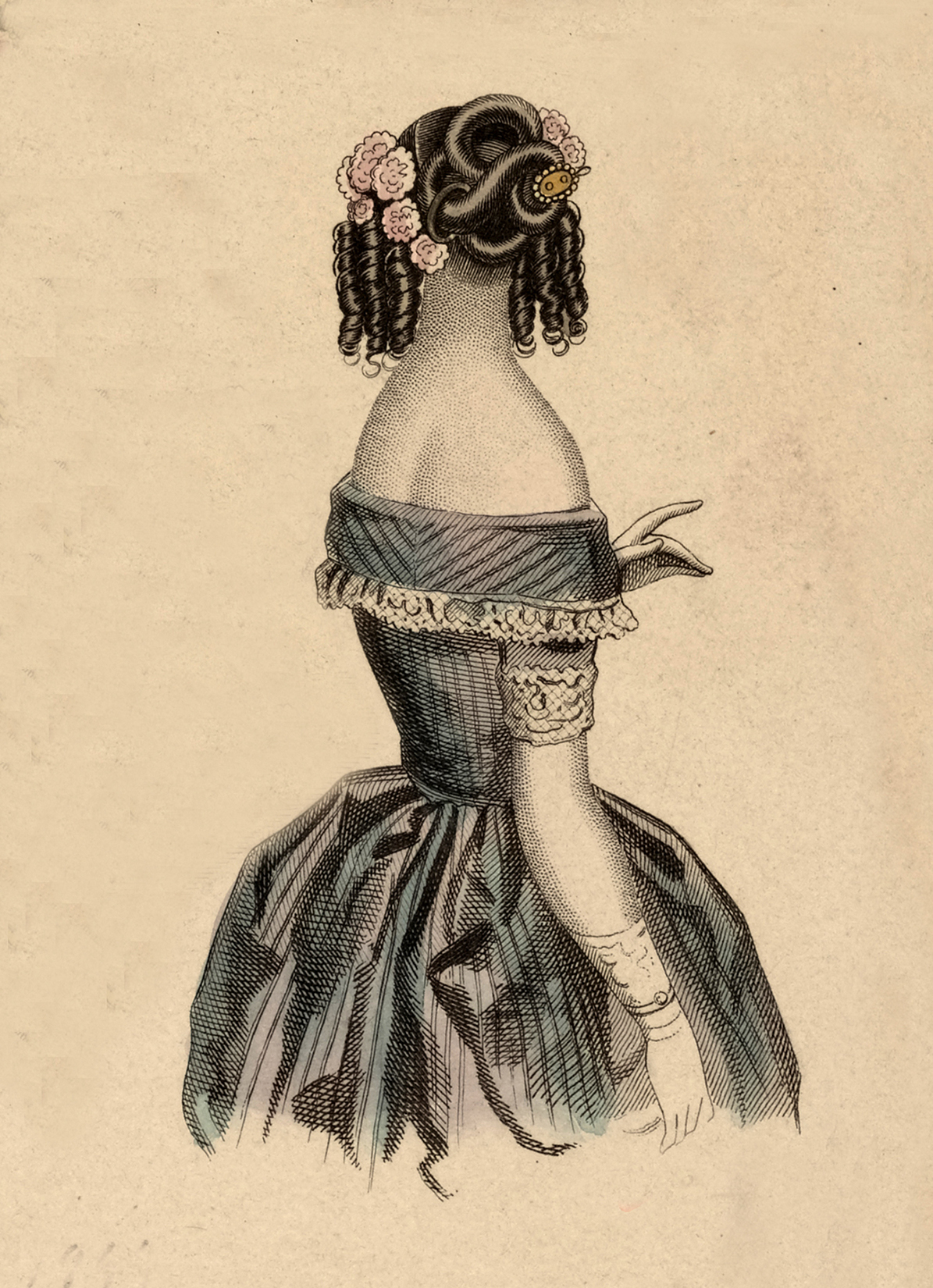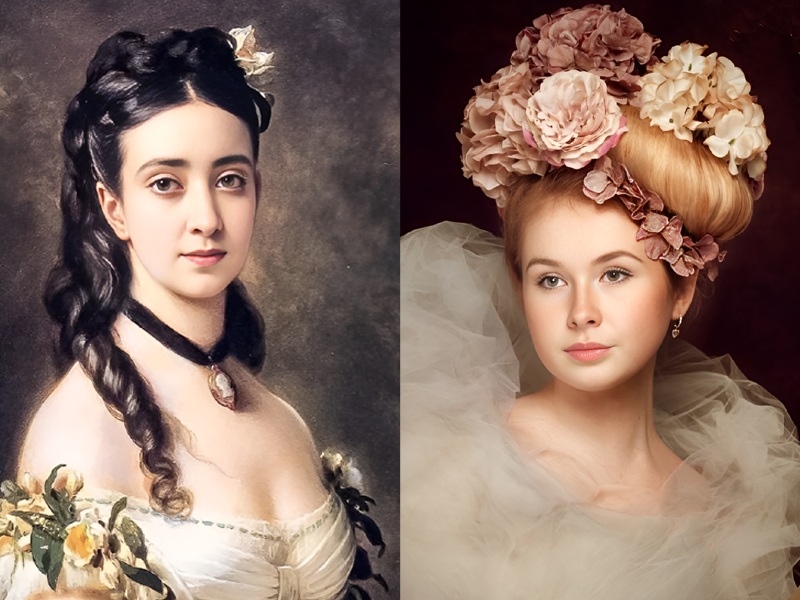Victorian Era Hairstyles for Women
Table Of Content

Many of these exhibits provide educational opportunities through workshops, allowing a modern audience to connect with historical sentimentality. The death of Prince Albert in 1861 profoundly affected Queen Victoria, who entered an extended period of mourning that lasted for the rest of her life. Her public display of grief and use of mourning jewelry, which included Prince Albert’s hair, set a precedent for the entire Victorian society. Barrels are also easy to form into a bun as you can see in this example here.
How to Know If Your Beauty Product Is Cruelty-free or Vegan
Overall, hairstyles for girls in the 1800s evolved from simple and natural looks to more intricate and stylized arrangements, reflecting the changing fashion trends of the era. During the mid-19th century, elaborate and intricate hairstyles became popular. Girls’ hair was styled in tight curls or waves cascading down the sides of their faces. These curls were achieved using curling irons or hot tongs, which were heated over a fire or a stove. In the 19th century, hair styling methods were quite different from what we see today.
Shop Victorian hair accessories, styling tools, books and wigs here!
These dyes were not very good quality, limited in colour and not very long-lasting. One popular method was to use henna for bringing out reddish tones. Some more ‘out there’ solutions involved using materials like walnut shells to attempt to darken lighter shades of hair. Facial hair, such as beards and moustaches, was common among the working class, partly due to the lack of regular shaving. Shaving required both time and resources (like razors and shaving soap), which were scarce.
Iconic 1950s Hairstyles for Every Hair Length
In Focus: How the Victorians wove beautiful jewellery from the hair of their deceased loved ones - Country Life
In Focus: How the Victorians wove beautiful jewellery from the hair of their deceased loved ones.
Posted: Fri, 30 Aug 2019 07:00:00 GMT [source]
This short hair was often accompanied by various forms of facial hair including moustaches, side-burns, and full beards. Political alliances dominated mens’ appearances in the 17th century. The Royalist “Cavalier” style was characterized by shoulder length hair. Ribbons and bows were often used and “lovelocks,” a small lock of hair that cascaded from the crown of the head down over the left shoulder, were treated as special features. The Parliamentarian “Roundheads” typically wore their hair cropped. When the English monarchy regained sovereignty, men kept their hair long and curly and often used “periwigs” as a substitute to their own hair.
How did women in the 19th century style their hair?
These ribbons were tied into bows or used to wrap around elaborate hairstyles, adding a touch of femininity and elegance. Another popular hair accessory was the snood, a type of net that encased and secured the hair at the back of the head. Snoods came in various colors and patterns, allowing women to coordinate them with their outfits. Overall, these hair accessories played a significant role in enhancing women’s hairstyles and adding a touch of style and sophistication.

There was a churning upheaval of the old hierarchical order, and the middle classes were steadily growing. Added to that, the upper classes' composition was changing from simply hereditary aristocracy to a combination of nobility and an emerging wealthy commercial class. The definition of what made someone a gentleman or a lady was, therefore, changing at what some thought was an alarming rate. There continued to be a large and generally disgruntled working class, wanting and slowly getting reform and change.
Beauty Routine of Midcentury Morticia Addams
Most Frenchwomen powdered their hair with white powder; Englishwomen generally left their hair unpowdered. At the back, the hair was generally arranged in small curls, a twist or braid worn pinned to the head, or pulled up smoothly. Roman hairstyles had modest beginnings usually with simple tresses bound with a band on top of the head.
Pin your strands up into an elegant low bun and spritz the finished look with a spray of Dove Style+Care Extra Hold Hairspray to hold it in place. While the collector's market for Victorian hair wreaths is rather niche, it can be lucrative for sellers. Most Victorian mourning wreaths are estimated to be worth $100-$200 at minimum, and elaborate wreaths are worth higher values because of their sheer size. One Victorian hair wreath which included the ambrotype of the deceased sold for nearly $200, and a shadowbox hair wreath sold for a little over $200 in 2020. Even hair wreaths shaped into unique designs can bring a significant profit, like a Victorian hair wreath that was threaded into the shape of a lyre that sold for a little more than $150.
Women’s hairstyles were elaborate and often involved intricate braiding, curling, and the use of various accessories like combs, ribbons, and flowers. Welcome to our step-by-step tutorial on mastering the art of 19th century hairstyles! In this guide, we will take you through the process of creating beautiful and intricate hairstyles that were popular during this iconic era. Welcome to 19th Century, where we delve into the mesmerizing trends and styles of the past. In this article, we bring you a captivating 19th century hair tutorial, unveiling the secrets of intricate braids, elegant updos, and ornate accessories.
TikToker finds human hair from the 1800s inside antique book she bought off the internet - The Daily Dot
TikToker finds human hair from the 1800s inside antique book she bought off the internet.
Posted: Mon, 01 Aug 2022 07:00:00 GMT [source]
Despite the short hair, the majestic touch of the curls is still present in this classy variation. Classic Victorian styles can always appear and disappear according to the ongoing trend. Contrarily, to survive for a long time, anything must go through a proper evolution. Many Victorian hairstyles got modernized in more than one way and are celebrated highly among the fans of both genres of hairstyles. This particular style featured as one of the top evening hairstyles for Victorian women. It has both the look and utility to it which made it a lucrative option for the majority of style enthusiasts.
The style became immensely popular later into the 1920’s, loved for its elegant and sophisticated look. It oozed both modernity and femininity and was a precursor to the modern-day crimping and waving techniques that dominated the 1900’s. Introduced towards the end of the Victorian era, the Marcel Wave was a game-changer in hair fashion. Created by François Marcel in the late 19th century (1870’s), this technique involved using a heated iron to produce controlled waves in the hair. Unlike the natural curls of ringlets, the Marcel Wave offered a more stylized and lasting wave pattern.
Comments
Post a Comment